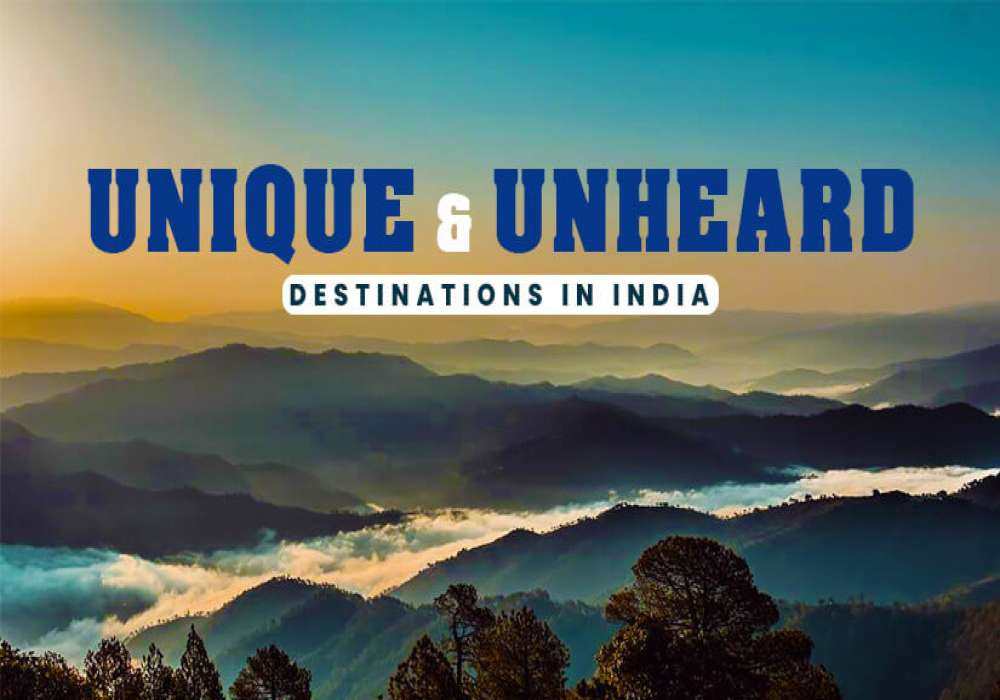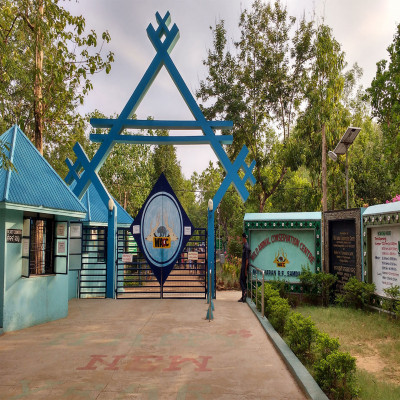Sambalpur – The Cultural and Natural Gem of Odisha
Sambalpur is a place where nature's beauty is all around you. Imagine flowing rivers, green hills, thick forests, and many types of animals coming together to make a stunning view. But Sambalpur offers more than just nature. It's also a lively place where you can enjoy the modern side of Indian culture, mixing old and new in a special way.
Economically, Sambalpur holds a special place as the largest city in western Odisha. It has long been a thriving center for the textile and handloom industry, which plays a significant role in the local economy and is well-known in the surrounding regions. The craftsmanship here is something to behold, with beautifully woven fabrics that reflect the rich cultural heritage of the area.
And here's an interesting tidbit about sambalpur tourist places: its name has a deep connection to the region's spiritual roots. According to history, the district was named after Goddess Samaleswari, the revered deity who is the principal Goddess of the area. Her presence is strongly felt in the community, and she continues to be an integral part of Sambalpur's identity.
So, whether you're drawn by the promise of natural beauty, the rich cultural tapestry, or the intriguing history, Sambalpur is a destination that offers something for everyone. It's a place where tradition meets modernity, and where the past and present coexist in harmony, making it a truly remarkable place to explore.
History of Sambalpur
Historically speaking, Sambalpur dates back to the prehistoric era. Yes, it even finds its mention in the book of Ptolemy and also in the records of Xuanzang.
Talking particularly about the 4th century, it was a time period when King Samudragupta defeated King Mahendra of Koshala conquering Sambalpur.
After this, Sambalpur has been ruled by multiple dynasties like Paduvanti, Samavanti as well as the Chauhans. In 1804, during the rule of Marathas, Sambalpur was taken over by the Britishers. Following this, it also saw many freedom struggles to overthrow the British supremacy. And after Indian Independence, the district was further divided into four separate regions known as Sambalpur, Bargarh, Jharsuguda and Deogarh.
Major Attractions in and Around Sambalpur
1. Hirakud Dam
This dam is built on the Mahanadi river and is considered to be one of the largest earthen dams and also the longest dams in the world. Due to this dam, one can witness some of the most spectacular birds which migrate here.
2. Samaleswari Temple
This temple is also located on the banks of the Mahanadi River and has been dedicated to Devi Samaleswari. The Goddess is also referred to as Jagannath Adishakti, Mahalaxmi and Mahasawarswati. And interestingly, the name of the city has also been kept in her name.
3. Leaning Temple of Huma
Dedicated to Lord Shiva, this temple was built in the 17th century and is one of the only leaning temples in the world. If you like to visit spiritual places, then you won’t be disappointed with your visit here.
4. Deer Park
This Deer Park is no less than a mini-zoo. It is located on the suburbs of Sambalpur and spreads in an area of about 13 hectares. One can witness a variety of animals like antelopes, barking deer, leopards, monkeys, and whatnot here. For wildlife lovers and photographers, this place is a paradise.
Things to Do in Sambalpur
- Seek blessings at Maa Samaleswari Temple and Ghanteswari Temple.
- Enjoy a boat ride and sunset views at Hirakud Dam.
- Go on a wildlife safari in Debrigarh and Ushakothi Sanctuaries.
- Explore the unique Huma Leaning Temple and its legends.
- Trek to Pradhanpat Waterfall for a refreshing experience.
- Visit Sambalpuri textile workshops and buy authentic handwoven sarees.
- Experience the vibrant Nuakhai festival, celebrated with folk music and dance
Best Time to Visit Sambalpur
- October to March - Pleasant weather, best for sightseeing and outdoor activities.
- August-September - Visit during Nuakhai festival to experience Sambalpur’s cultural richness.
- July-September - Monsoon season enhances waterfalls and green landscapes.
How to Reach Sambalpur
Sambalpur is truly an amazing combination of urban travelling and spiritual getaway. This is a rare combination to find. It is located at a distance of about 1,406, 671, 1,397, 1,645 km from Delhi, Kolkata, Mumbai, and Bengaluru respectively. Here is how you can reach Sambalpur following the given means of public transportation.
By Air
To travel here by air, you can consider deboarding at either Swami Vivekananda Airport (RPR), Raipur, at a distance of 263 km or Biju Patnaik Airport (BBI), Bhubaneshwar at a distance of 280 km. Both airports have good overall connectivity with other Indian cities. Once you deboard at the airport of your convenience, take a cab or some other means of public transportation available at hand to reach your destination.
Here is a list of Indian cities from where flights are available to Sambalpur
- Delhi to Raipur Flight
- Mumbai to Raipur Flight
- Hyderabad to Raipur Flight
- Bangalore to Raipur Flight
- Kolkata to Raipur Flight
- Ahmedabad to Raipur Flight
By Train
There are about four local railway stations available in Sambalpur. These are Sambalpur (Kharagpur), Sambalpur road (fatal), Hirakud, and Sambalpur city. All of these have been well connected with other Indian cities. After deboarding at one of the railway stations, you will need to cover the remaining distance by some means of public transportation.
By Road
Sambalpur is fairly well-connected to other cities by motorable roadways and national highways. One of the upcoming state highways which is the Sambalpur state highway 10 is currently under construction. However, there are various interstate buses regularly available to Sambalpur. You can also consider booking private buses or hire a cab if the budget allows you. Otherwise, depending on the location, you can also self-drive to this place.
- From Raipur - 271 km via NH53
- From Bilaspur - 271 km via NH53 or NH49
- From Raigarh - 115 km via NH49 or NH53
Conclusion
Visiting Sambalpur is a journey into the heart of nature and culture. From its stunning landscapes to its rich traditions, Sambalpur offers an experience that stays with you long after you leave. Whether you’re exploring the lush greenery, admiring the local crafts, or simply soaking in the vibrant culture, Sambalpur is a destination that has something for everyone.
Ready to plan your trip to Sambalpur? Let Adotrip make your journey unforgettable with customized travel packages and expert guidance. Explore Sambalpur with ease and discover all that this beautiful region has to offer.
Frequently Asked Questions about Sambalpur
Q1: What is Sambalpur famous for?
A1: Sambalpur is famous for its rich cultural heritage, particularly its handloom and textile industry. The city is also known for its natural beauty, including rivers, forests, and wildlife.
Q2: How do I reach Sambalpur?
A2: Sambalpur is well-connected by road, rail, and air. The nearest airport is in Jharsuguda, about 50 km away, and Sambalpur has its own railway station with trains connecting to major cities in India.
Q3: What are the top tourist attractions in Sambalpur?
A3: Top tourist attractions in Sambalpur include the Hirakud Dam, Samaleswari Temple, Debrigarh Wildlife Sanctuary, and the famous Sambalpuri sarees.
Q4: What is the best time to visit Sambalpur?
A4: The best time to visit Sambalpur is from October to March when the weather is pleasant and ideal for sightseeing.
Q5: Is Sambalpur safe for tourists?
A5: Yes, Sambalpur is generally safe for tourists. However, like any other destination, it's advisable to take common safety precautions.
Q6: What cultural experiences can I have in Sambalpur?
A6: In Sambalpur, you can experience traditional dance forms like Sambalpuri folk dance, visit local markets for handloom products, and attend festivals such as Nuakhai, which is a major celebration in the region.
Q7: Are there any good hotels or accommodations in Sambalpur?
A7: Yes, Sambalpur offers a range of accommodations from budget hotels to more luxurious options, catering to different preferences and budgets.
Q8: What kind of food is available in Sambalpur?
A8: Sambalpur offers a variety of traditional Odia cuisine, including dishes like Pakhala, Mutton Curry, and sweets like Rasabali. There are also options for other Indian and continental cuisines.
Q9: Can I buy local handicrafts in Sambalpur?
A9: Yes, Sambalpur is a great place to buy local handicrafts, especially the famous Sambalpuri sarees and other handloom products that are known for their intricate designs.
Q10: What festivals are celebrated in Sambalpur?
A10: Some of the key festivals celebrated in Sambalpur include Nuakhai, Durga Puja, and Diwali. Nuakhai is particularly significant as it is a major harvest festival celebrated with great enthusiasm in the region.
Popular Packages
Blogs

Mysterious Facts About Jagannath Temple Puri - Unveil the Secrets

7 Famous Festivals of Odisha that Exudes Warmth and Diversity

Famous Temples In Odisha 2025: A Journey Through Spiritual Wonders

Famous Food Of Odisha 2025 - Discover the Rich Flavors of Odia Cuisine

Unique Places to Visit in India - Hidden Gems and Unexplored Destinations
Nearby Stays

Hotel JCD
151, Beladula Road, Chakradhar Nagar, Raigarh, Chh...

Hotel Shivam
Railway Station Chauk, Ramniwas Talkies Rd, Agrase...

Hotel Saket Heritage
Sattigudi Chowk Civil Lines, Raigarh, Chhattisgarh...

Sunshine Hotel
Beside Ganga Nursing Home, Dhimrapur Road, Jagatpu...




























